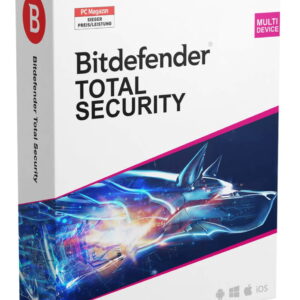Running and managing a data facility can be challenging and expensive, highlighting a definite requirement for high-performance, cost-effective universal calculations, networking, and storage resolutions. Red Hat, Senao Networks, and Intel have collaborated to provide the Senao SX904 Next-Gen NetSec Accelerator, which addresses these difficulties with inventive methods. This solution seamlessly integrates with Red Hat’s extensive business platform selections, encompassing Red Hat Enterprise Linux (RHEL), Red Hat Device Edge, and Red Hat OpenShift. In this piece, we showcase how incorporating the Senao SX904 Next-Gen NetSec Accelerator PCIe card into an OpenShift collection enables the expansion of accelerated containerized tasks.
The Senao SX904 essentially acts as a data center server compacted into a PCIe form factor constructed on the Intel® NetSec Accelerator Reference Design, detailed in the SX904 datasheet. It’s driven by the Intel® Xeon® D processor (code-named Ice Lake), dual-25G Intel® Ethernet Controller E810 (code-named Columbiaville), and MCIO for quad NVMe storage. Fusing computation and security hardware acceleration, the SX904 satisfies the processing requisites of contemporary computation and data-intensive tasks.

Purposely crafted to manage a broad array of scenarios for general computation, networking, and storage, the SX904 is endorsed by Red Hat and accessible through the Red Hat Ecosystem Catalog, ensuring full support and prolonged upkeep with RHEL 9.4+ and OpenShift 4.16+. The SX904 tackles the issues with physical space constraints in amplifying on-premises data centers and diminishes the necessity for procuring additional rack servers. It seamlessly integrates by simply inserting the card into current servers operating on Red Hat software resolutions, appending computation and storage nodes without substantial expenses or intricacy, hence prolonging the lifespan of your ongoing server resources. This potent PCIe card offers a method to transfigure how computation resources are stationed in the usual data center and in exterior edge computing sites.
Employing OpenShift and the SX904
You can set up the SX904 as a metal node in OpenShift to more effortlessly unleash the complete potential of your containerized tasks. This allows you to profit from OpenShift’s application ecosystem, portability, efficient resource utilization, and automated resizing. The fusion of SX904 with OpenShift guarantees high accessibility with self-recovery and continuous updates, while aiding in simplifying microservices management and security via sophisticated isolation functionalities. Supported by OpenShift’s robust backing and environment, the SX904 endows a simplified, ready-to-use hardware solution for deploying and operating modern applications at scale.

Setting up Red Hat OpenShift on the host with SX904
With the SX904 set up as the solitary node Openshift (SNO) node, a few adjustments to the SX904 node are essential to enable connectivity between the host and the SX904. Ordinarily, there is no network linkage between the host and the SX904.
By adding a Linux bridge linking the backplane and external 25G interfaces as a Day-2 Operation on the SX904, the host shares the same Layer 2 network as the SX904. This allows both the host and the SX904 to reach the Openshift control panel hosted on the SX904 as part of SNO. This process involves defining the Linux bridge network manager connection for each external and host-facing interface, encoding the files to base64, storing the file contents for the OpenShift machine configuration, and finally implementing the machine configuration file to create the Linux bridge on the SX904.
When the SX904 reboots with the Linux bridge set up, the host can be provisioned using any method of integrating hosts via the Assisted Installer.
Upon adding the host to the cluster, applications can horizontally scale between the host and the SX904. For illustration, a basic NGINX web server can be expanded across host and SX904 nodes.
Accessing these NGINX pods exhibits that OpenShift evenly distributes requests across pods working on the host or SX904. This elementary instance of scaling web microservices barely touches the surface of the potentials achievable for offloading tasks on the SX904.
The Senao SX904 Next-Gen NetSec Accelerator showcases a baseboard management controller (BMC) exploiting the DMTF Redfish standard, enabling automated, highly expandable deployments with minimum exertion. Its durable web interface is merged with the processor’s serial console through iKVM, facilitating simple debugging for a hassle-free user experience.
With the SX904, advanced provisioning is just a few clicks away. Administrators can conveniently manage RHEL and OpenShift installations through user-friendly graphical web interfaces and Redfish HTTP/REST APIs. The ultimate outcome is a streamlined deployment process with increased reliability, empowering your data center to perform at enhanced efficiency.
Whether you are escalating workloads, offloading computation, or enhancing security, the SX904 combined with Red Hat’s assortment of hybrid cloud technologies empowers your data center to operate more effectively, more efficiently, and at scale.











